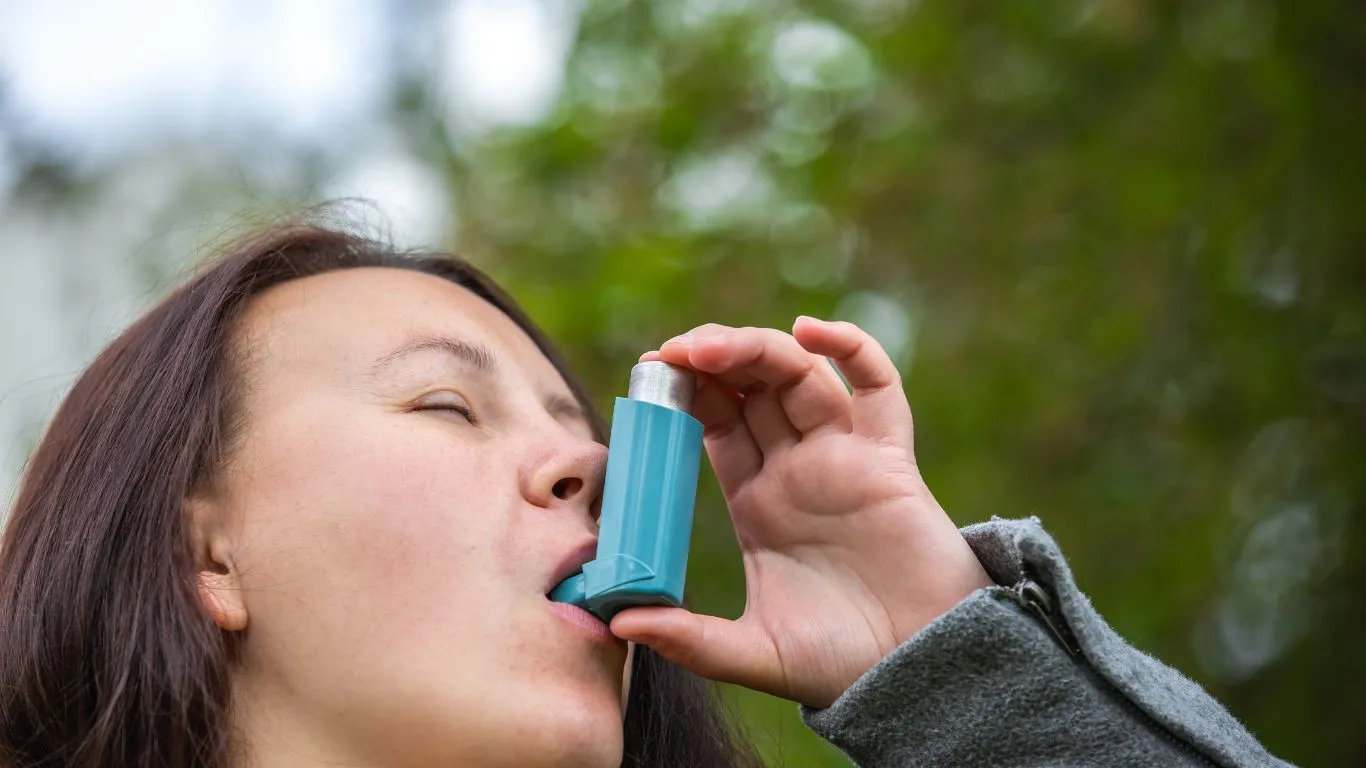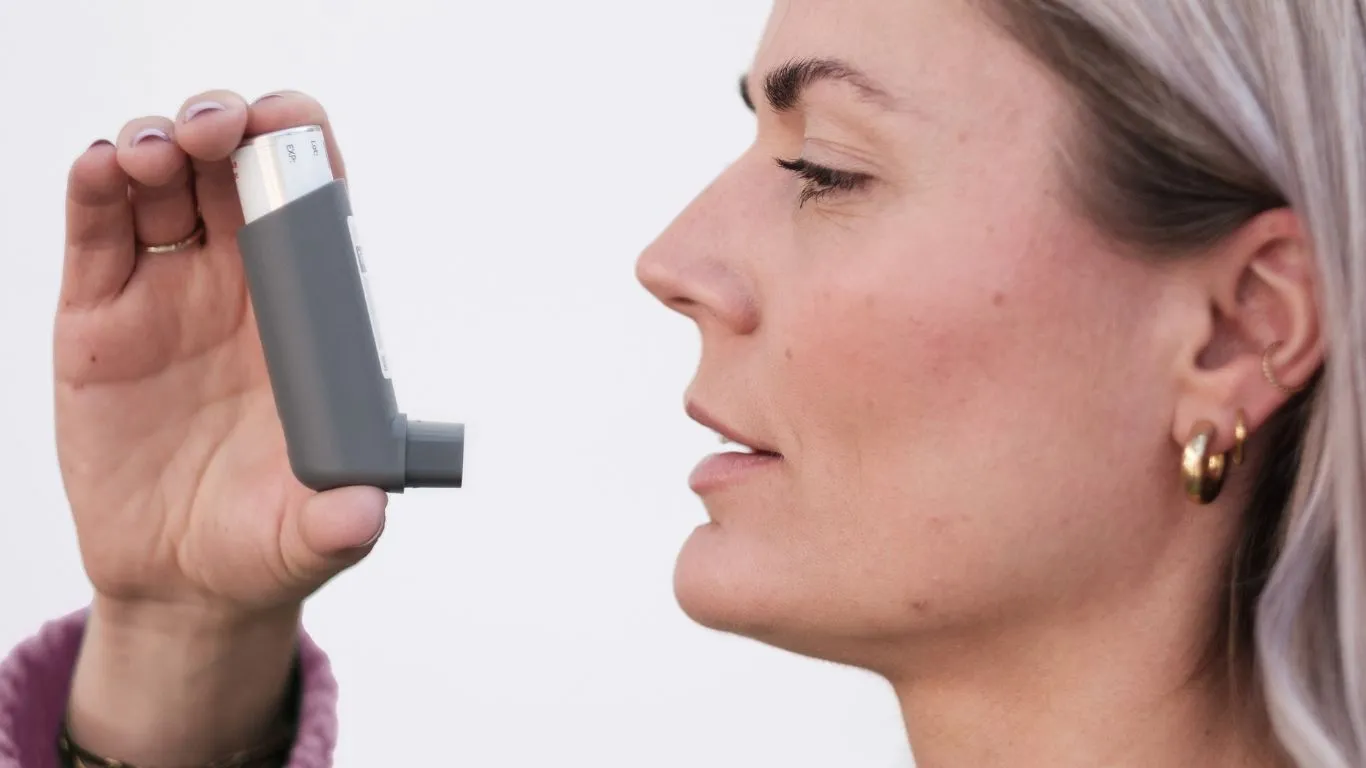Early Warning Signs of Asthma Worsening With Age You Shouldn’t Ignore
When I first started working as a pulmonary nurse practitioner, I thought I had a pretty good handle on asthma. It was something I saw in both kids and adults, and most of the time, it was manageable. Fast forward a few years, and what really caught me off guard was how many of my older adult patients — some of whom had their asthma “under control” for decades — started to notice changes they weren’t expecting. If you’re wondering about the signs of asthma worsening with age, you’re not alone. It’s something I’ve talked about with countless patients sitting across from me in the exam room, many of them saying, “I never used to get this short of breath doing everyday stuff!”
Why Asthma Isn’t Always a “One-and-Done” Diagnosis

Asthma isn’t static. It evolves. And while we often associate it with kids wheezing on the playground or teens struggling during soccer practice, adults — especially those over 40 — often find themselves facing a different beast entirely.
One of the most important things I try to explain to my patients is that aging changes our lungs. It changes our immune system, our muscle tone, and even the way medications work in our bodies. So if your asthma seems harder to manage in your 50s, 60s, or beyond, it’s not all in your head.
So… Why Does Asthma Get Worse With Age?
There are a bunch of reasons asthma can flare up more in older adults, and they’re not always obvious. Here are some of the main culprits I’ve seen firsthand:
- Decreased lung elasticity: Your lungs aren’t as springy as they used to be. That makes it harder to push air out, especially during an asthma flare.
- Weaker respiratory muscles: Coughing and deep breathing takes effort — more than you might think.
- Underlying chronic conditions: COPD, heart disease, and even acid reflux can muddy the waters and make asthma harder to control.
- Medication tolerance: I’ve had patients tell me their rescue inhalers just don’t work as well anymore. That’s sometimes due to decreased receptor sensitivity or improper inhaler technique.
- Immune system changes: Your body doesn’t fight off allergens and infections the same way, which can trigger more frequent attacks.
Recognizing the Signs of Asthma Worsening With Age

This is where things get a little tricky. The classic asthma symptoms — wheezing, coughing, chest tightness — don’t always look the same in older adults. In fact, one of the most common things I hear is something like, “I don’t really wheeze, but I just can’t seem to catch my breath like I used to.” Sound familiar?
Here are some subtle (and not-so-subtle) signs your asthma might be changing as you age:
- Shortness of breath during mild activity: If a walk to the mailbox feels like a mini workout, pay attention.
- More nighttime symptoms: Waking up coughing or wheezing more often than usual? That’s a red flag.
- Frequent use of rescue inhalers: If your inhaler is becoming your best friend, that’s not a good thing.
- Delayed recovery from colds: A cold that lingers and turns into weeks of wheezing could mean your asthma isn’t well controlled.
- Chest tightness without obvious triggers: This is something I hear from my older patients a lot. The sensation may come on gradually or even feel like anxiety or heart issues.
It’s Not Just You — Aging and Asthma Are a Tough Combo
One of my patients, James, a 68-year-old retired electrician, told me, “I thought I beat asthma years ago. But now I can’t even mow the lawn without stopping to breathe.” That stuck with me because it’s such a common sentiment. The reality is, as we get older, asthma often creeps back in or becomes harder to manage — even if it was well-controlled before.
Part of that is due to normal aging, and part of it is because we often chalk up breathing issues to “just getting older.” But that’s not always true — and definitely not something to ignore.
Why You Shouldn’t Ignore the Early Clues

If there’s one thing I wish every patient with asthma over the age of 50 understood, it’s this: early intervention matters. The longer you wait to address worsening symptoms, the harder it is to get things under control again. I’ve had patients who went from occasional inhaler use to daily oral steroids simply because they didn’t speak up soon enough.
That doesn’t mean you should panic at the first sign of breathlessness, but it does mean being proactive. Keep a symptom diary. Track how often you’re using your inhaler. And don’t be afraid to bring it up with your provider, even if it seems minor.
What I Tell My Patients: Trust Your Gut
You know your body better than anyone else. If something feels different — if your asthma feels different — it probably is. And that’s your cue to act.
Stay tuned, because next we’ll talk more about managing asthma as you age, including treatment tips, lifestyle tweaks, and how to keep living life on your own terms — without letting asthma hold you back.
Managing Asthma as You Age: What Actually Works?

One of the most common questions I get from older patients is, “What can I *actually* do to make this better?” And trust me — I get it. Living with asthma that’s suddenly acting up after years of being stable can feel confusing and frustrating. The good news? There’s a lot we can do. The not-so-great news? It usually requires a few adjustments to what worked in the past.
If you’re starting to notice signs of asthma worsening with age, it’s time to rethink your approach. In my clinic, we focus on a few key pillars — and I’ll break them down like I do with my patients, straight talk, no fluff.
1. Review Your Inhaler Technique (Yes, Again)
It’s shocking how often inhaler technique slips over time. Even folks who’ve used one for decades get out of rhythm — and sometimes, it’s because arthritis, vision changes, or even memory lapses get in the way.
- Spacer devices can make a world of difference. I always recommend them for older adults.
- If you’re not sure you’re using your inhaler right, have your provider or pharmacist do a demo and watch you try it.
- Dry powder inhalers, metered-dose inhalers, and soft mist inhalers all have different techniques — it’s not one-size-fits-all.
I had one patient who felt their asthma was spiraling out of control, but we realized they were barely getting any medication into their lungs because they were exhaling *after* activating the inhaler. A quick technique tweak changed everything.
2. Update Your Action Plan
Asthma action plans aren’t just for schoolkids — every adult with asthma should have one, especially as we get older. It should spell out:
- What your daily meds are
- What to do when symptoms flare up
- When to call for help
And don’t let that dusty old plan from 10 years ago collect any more dust. Your needs change, and so should your plan.
How Aging Affects Asthma Medications

Here’s a behind-the-scenes secret from my practice — one of the most overlooked reasons older adults experience worsening asthma is because their bodies simply respond differently to medication than they used to.
Metabolism Slows Down, Side Effects Go Up
With age, your liver and kidneys don’t process medications quite as efficiently. That can increase the risk of side effects or change how effective your meds are. I often see this with oral steroids and theophylline, which require extra monitoring in seniors.
Beta-agonists and Your Heart
Medications like albuterol can cause shakiness or even irregular heart rhythms in older adults. If you’re using your rescue inhaler more often and feeling jittery or noticing heart palpitations, talk to your provider — it might be time to re-evaluate your prescription.
And remember, overuse of short-acting beta-agonists is not just a sign of uncontrolled asthma — it can actually *make things worse* if it’s the only thing you’re relying on.
What I Recommend Instead
- Daily controller medications: These are the backbone of asthma treatment, especially as we age.
- Leukotriene modifiers: I’ve seen these work really well for older patients with allergies or inflammation-driven symptoms.
- Biologic therapies: If nothing seems to work, ask about newer options like biologics — they’re changing the game for people with severe asthma.
Lifestyle Adjustments That Make a Big Impact

Medication is only part of the story. In fact, some of the biggest wins I’ve seen come from simple lifestyle changes. And no, I’m not going to tell you to run a marathon or move to the desert — these are doable tweaks.
Clean Up the Air at Home
Older lungs are more sensitive to dust, mold, and chemical irritants. I recommend:
- Getting a HEPA air purifier (especially in the bedroom)
- Keeping pets out of sleeping areas
- Using fragrance-free cleaning products
- Replacing old carpets if possible — they’re dust magnets
One of my longtime patients finally replaced her decades-old drapes with washable blinds and called me a week later saying she hadn’t wheezed all week. Sometimes the small stuff adds up.
Don’t Skip Pulmonary Rehab
I can’t stress this enough. Pulmonary rehab isn’t just for people with COPD — it’s *amazing* for older adults with asthma. It teaches breathing techniques, builds stamina, and improves quality of life. If your asthma has you sitting out of activities you love, ask your provider about a referral.
Stay Active — Even a Little Helps
You don’t need a gym membership. Gentle movement like stretching, tai chi, or walking laps inside a mall can help improve lung function and keep your muscles strong. The key is consistency — not intensity.
Mind Your Mental Health
This one’s big and often ignored. Anxiety and depression are common in folks dealing with chronic breathing issues — and they can make asthma feel even worse. I’ve had patients who were stuck in a cycle of panic and shortness of breath, thinking they were having constant asthma attacks, when really, they were dealing with unmanaged anxiety.
Therapy, support groups, or even just having someone to talk to can make a world of difference. Don’t underestimate the power of mental well-being on your physical health.
When to Revisit Your Diagnosis
Believe it or not, I’ve had patients who carried an asthma diagnosis for years — only to find out later that it was something else entirely. In older adults, things like COPD, heart failure, and even vocal cord dysfunction can mimic asthma. If your symptoms aren’t responding the way they should, it’s worth rechecking the diagnosis with a full pulmonary function test (PFT).
I had one gentleman in his 70s who wasn’t getting better despite textbook asthma treatment. We did a full workup and found that most of his symptoms were from heart failure. Once he got proper cardiac care, the “asthma” symptoms faded almost completely.
Point is — if it feels like your asthma is changing, don’t assume it’s just aging. Push for answers. Advocate for yourself. That’s the kind of advice I give to every patient walking into my exam room, and I’m giving it to you now, too.
How to Advocate for Yourself When Asthma Changes With Age

One of the hardest things I see in my practice is older adults feeling dismissed or brushed off when they bring up worsening asthma symptoms. They’ll say things like, “My doctor told me it’s just aging,” or, “I didn’t want to be a bother.” That breaks my heart because your symptoms matter, and they deserve to be heard.
Let’s get one thing straight — signs of asthma worsening with age aren’t just something to shrug off. If you’re coughing more, using your inhaler constantly, or avoiding activities because of shortness of breath, those are real red flags. And while aging does play a role, it’s not an excuse for poor asthma control.
Speak Up Early and Often
You are your best advocate. I always encourage my patients to keep a little symptom tracker — it doesn’t have to be fancy. A notebook or a quick phone app works fine. Jot down things like:
- How often you use your rescue inhaler
- When you experience breathlessness or chest tightness
- Any missed doses or side effects from medications
That way, when you’re sitting in the exam room, you have clear, specific information. It’s not just “I’ve been feeling worse.” It’s, “I used my inhaler five times this week, which is more than usual, and I couldn’t finish my walk on Tuesday.” That helps guide better care, and trust me — your provider will appreciate the detail.
Creating a Support System That Understands Your Needs

Asthma can feel isolating, especially when it starts affecting your lifestyle. I’ve had patients stop traveling, skip social events, or even avoid family gatherings out of fear they’ll have an attack. The thing is, managing asthma in your 60s or 70s isn’t something you should have to do alone.
Find an Asthma-Savvy Healthcare Team
This one’s huge. If your current doctor isn’t taking your symptoms seriously or just keeps renewing the same old inhaler without adjusting anything, it might be time for a second opinion. You deserve a provider who:
- Takes your concerns seriously
- Regularly re-evaluates your treatment plan
- Helps you stay up to date on new therapies
Pulmonologists and respiratory therapists can be especially helpful. And don’t underestimate the value of a good pharmacist — they often catch drug interactions or suggest simpler options you might not have considered.
Lean Into Community
Whether it’s a local support group, an online forum, or even a few friends who understand chronic conditions, community support makes a difference. I’ve seen patients thrive after connecting with others facing similar struggles. Sharing experiences helps you feel seen, supported, and better equipped to navigate the ups and downs.
My Personal Advice From the Exam Room
Let me tell you something I often share with patients during quiet moments after a checkup: asthma doesn’t define you — even if it feels like it’s taking up a lot of space right now. Over the years, I’ve worked with folks who felt completely defeated by their breathing struggles. But with a little patience, some honest conversations, and the right plan, I’ve seen people get their lives back.
One of my patients, Margaret, a 72-year-old retired teacher, was so frustrated with her “new” asthma symptoms that she stopped going on her daily walks. After we dug a little deeper, adjusted her meds, and helped her join a community walking group with structured breathing exercises, she told me, “I feel like I got a piece of myself back.” That’s why I do what I do — and that’s what I want for you, too.
What You Can Start Doing Right Now
- Book a review appointment if it’s been more than 6–12 months since your last asthma evaluation.
- Ask for a pulmonary function test (PFT) — this gives a clearer picture of what’s really happening in your lungs.
- Check your inhalers — both the technique and the expiration dates. You’d be surprised how many folks are unknowingly using expired meds!
- Start a daily symptom journal — it only takes 2 minutes a day, but it can change how your doctor manages your care.
It’s the little steps that move you toward better control. And you don’t have to do it all in one day — just start somewhere.
References
- National Institutes of Health (NIH)
- Health.com
- Centers for Disease Control and Prevention (CDC)
- American Lung Association
Disclaimer
This article is for informational purposes only and is not intended to substitute professional medical advice, diagnosis, or treatment. Always seek the advice of your physician or other qualified health provider with any questions you may have regarding a medical condition. Never disregard professional medical advice or delay seeking it because of something you have read here.

Bianca Nala is a compassionate Nurse Practitioner with a strong background in primary and respiratory care. As a health writer for Healthusias.com, she combines her clinical expertise with a talent for clear, relatable storytelling to help readers better understand their health. Bianca focuses on topics like asthma, COPD, chronic cough, and overall lung health, aiming to simplify complex medical topics without losing accuracy. Whether she’s treating patients or writing articles, Bianca is driven by a single goal: making quality healthcare knowledge accessible to everyone.






